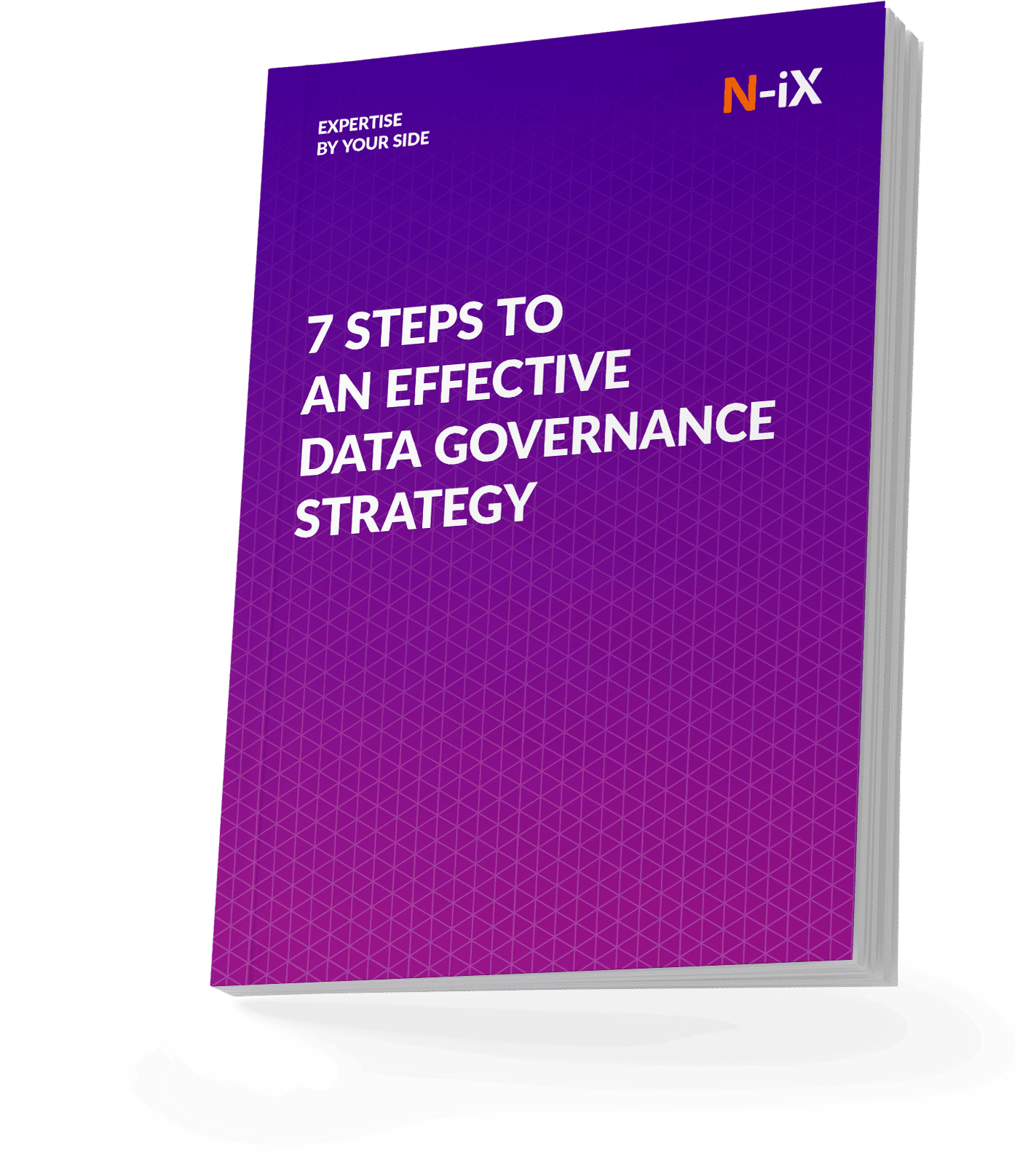Leveraging data intelligently has become the key competitive advantage for enterprises across industries. Business Intelligence (BI) sits at the core of the modern data revolution. It transforms overwhelming volumes of raw enterprise data into actionable insights to guide enhanced decision-making.
As a decision-maker, you are faced daily with critical choices that impact operational efficiency, long-term strategy, financial performance, and overall organizational success. Business intelligence reporting distills low-level data points from fragmented systems into digestible dashboards and visualizations focused on the metrics most relevant to leaders like you.
Therefore, we aim to introduce BI reporting and how it serves as the crucial link between aggregated enterprise data and improved insights to drive better decision-making across any organization, whether a Fortune 500 firm or a prominent startup.
Why should you care about Business Intelligence reporting
Business Intelligence (BI) reporting is the visualized presentation of data-driven insights about critical business metrics in formats that guide enhanced decision-making. It powers the crucial link between raw enterprise data and improved organizational performance.
BI reporting takes aggregated data from cross-functional sources such as sales databases, financial systems, inventory platforms, etc., and runs this through analytical models to surface contextual insights. These could range from customer churn predictions, production bottlenecks, or emerging market trends. The algorithms can even detect blind spots that humans fail to anticipate.
These insights then get translated into consumable reports consisting of KPI dashboards, interactive visualizations, predictive forecasts, and more. Self-service BI tools today empower all business teams to access existing reports or create customized ones tailored to their specific analytics need.

The actual value of BI reporting comes from enabling decisions grounded in data-based evidence rather than intuition or past precedent alone. This leads to tangible gains like optimized productivity, preemptive risk management, and the capture of high-value opportunities. Consider sales leaders relying on reporting to analyze pricing impacts on conversion rates for setting optimal price points. Without data guiding pricing strategy, they risk losing deals from overpriced offerings.
For executives, reporting delivers the much-needed single source of truth that provides transparency into operations and indicators assessing progress on strategic goals. Rather than depend on aggregated updates, they can self-serve rapid insights to course-correct metrics showing early signs of decline. As consumer preferences evolve and markets disrupt faster, the organizational risks from decisions made without data will only compound exponentially. Forward-looking companies embrace BI reporting early to build a sustainable culture and infrastructure that allows competing on analytics.

5 Business Intelligence reporting best practices
The success of the reporting strategy depends largely on the quality and effectiveness of the reports themselves. Here, we expand on five leading practices for enterprises to optimize their reporting.
1. Be selective with KPIs
A common pitfall that causes reporting fatigue across organizations is tracking an overwhelming number of metrics across dashboards. This creates analysis paralysis instead of informing decisions. For maximum impact, thoughtfully narrow down the 5-7 vital key performance indicators (KPIs) per department that guide the most crucial decisions. Curating the critical few over the trivial many brings focus to analysis.
2. Set relevant comparisons
Merely displaying raw figures for KPIs loses context without relative points of comparison. Anchor monthly sales figures against quotas, production capacity utilization rates over past years, or customer retention numbers versus industry benchmarks on reports for more meaningful insights. Setting relevant comparisons helps highlight areas of overperformance and underperformance.
3. Keep visualizations clear
The effectiveness of any reporting relies on the apprehension of diverse users. So choosing clear, intuitive charts and graphs over tables or gauges boosts engagement across roles—whether for the CEO tracking enterprise KPI bubbles or regional store managers monitoring location-level metrics. Maintaining visual simplicity and explaining complex statistical terms with tooltips or legends increases adoption.
4. Personalize for roles
One-size-fits-all reporting fails to support tailored decision-making across enterprise functions. Sales reports likely track opportunities-to-closed rates and pipeline forecast trends, while service reports monitor customer ticket resolution times and satisfaction scores. Create customized role-based dashboards to focus insights around specific user needs while restricting access to sensitive data.
5. Review continually
As markets evolve and business priorities change, so do decision intelligence needs. New KPI needs may emerge while existing ones become obsolete. To stay relevant, BI teams must periodically review reports and metrics with business leaders, retiring outdated reports and modifying others.

Following these playbook items will elevate the reporting competency and accelerate data-driven transformation initiatives for resilient enterprises of the future.
Business Intelligence reporting challenges and considerations
While the potential benefits of reporting for enhanced decision-making are manifold, the road to building analytics-driven organizations carries its fair share of pitfalls that commonly derail success.
1. Data quality issues
Many reporting initiatives run into bad data quality, undermining trust in insights. Sources like inaccurate operational entries, duplication errors, and outdated legacy systems can mislead reports. Establishing robust data governance procedures, mastering data management, and setting data SLAs helps safeguard quality.
2. Changing source systems
Enterprises frequently evaluate new software alternatives as innovation progresses. But migration from on-prem data warehouses or ERP tools impacts integrated BI reports reliant on those sources. IT needs strategies to insulate reports via abstraction layers to minimize business disruption when underlying sources change.
3. Overwhelmed users
Too much complexity in data models, overwhelming KPI options, and difficult-to-use reporting tools are key adoption barriers for business users. Following visual best practices and investing equally in enablement ensures users across expertise levels can leverage reporting to their full potential.
4. Undefined success metrics
Many reporting projects need to outline tangible metrics beyond technology implementation. Setting clear benchmarks around usage, decisions impacted, or revenue gains increases the ability to measure ROI and business value delivered by analytics.
5. Organizational silos
Lack of coordination across business and technical teams with blurred accountability is another hurdle for BI success. Developing an enterprise-level analytics strategy with cross-department data governance delivers more harmonized and impactful reporting capabilities.

By anticipating these pitfalls and challenges early, IT and analytics leaders can navigate around them through proactive mitigation strategies to smooth reporting transformation journeys. Failing to plan for these risks guarantees initiatives falling short of desired strategic objectives.
Read more: How to partner with top BI developers: the ultimate guide
Success story: driving growth with Business Intelligence reporting
Cleverbridge, a leading provider of ecommerce and subscription management solutions, needed to deliver more powerful analytics reporting to address the data-driven decision-making needs of a strategic retail client.
With data spread across multiple systems and complex workflows, Cleverbridge’s existing reporting failed to provide the visual intelligence and granular business metrics demanded to guide growth for this client.
Our approach:
The N-iX team assessed the client’s data infrastructure user needs and identified key subscription KPIs crucial for strategic planning.
We then designed and implemented a cloud analytics solution on Microsoft Azure that consolidated data from source systems into a cloud data warehouse. Leveraging the capabilities of Power BI, we built an insights-driven BI reporting suite with interactive dashboards providing actionable visibility into customer analytics, churn predictors, sales forecasts, and other metrics pivotal to the client’s expansion plans.
Value delivered:
- Enhanced BI reporting. Visually intuitive BI reports delivered granular intelligence to shape major growth decisions for the client.
- Expanded offerings. By addressing unmet needs around analytics, Cleverbridge added more value, leading to the client expanding its use to other business units.
- Market differentiation. With advanced BI reporting capabilities, Cleverbridge boosted its competitive positioning significantly.
- Improved data governance: Integration of security and monitoring tools strengthened protection over data assets.
Read more: Driving growth in e-commerce with a comprehensive data analytics solution
Get your 7-step guide to building a robust data governance strategy


Success!

Final remarks
Business Intelligence reporting is a vital tool for the data-driven decision-making landscape. It empowers organizations to transform raw data into actionable insights, driving efficiency, innovation, and growth. As we've explored the key aspects of BI reporting, the real challenge lies in choosing the right partner to implement and leverage these tools effectively.
This is where N-iX comes in. With our extensive experience and tailor-made BI solutions, we are uniquely positioned to help your business harness the power of BI reporting. Our commitment to understanding your needs and delivering customized, user-friendly, and efficient BI tools sets us apart. Partner with N-iX and take the first step towards transforming your data into a strategic asset for your business’s future success.
Have a question?
Speak to an expert




